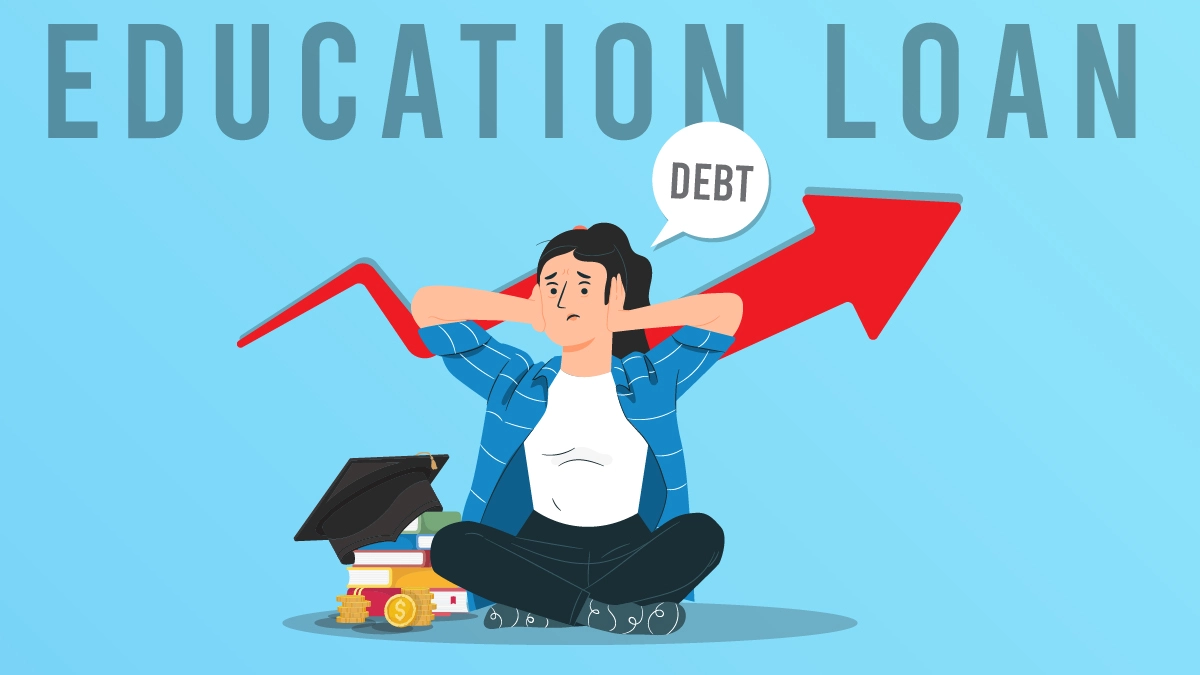https://www.wemakescholars.com/blog/how-to-convert-an-npa-education-loan-account-back-to-normal-a-step-by-step-guide
A Step-by-Step Guide on Converting an Non-Performing Asset back to a Normal Account
Education Loan Repayment | Updated

Education loans have become the primary source for many students to fund their higher studies in India and abroad. However, due to unforeseen circumstances, such as the loss of a family member or sudden unemployment, many students struggle to repay the loan. When these repayments become overdue for a certain period, typically more than 90 days, the loan account is converted to a Non-Performing Asset (NPA).
An NPA status on the loan can have severe implications for both the applicant and the co-applicant, negatively impacting the CIBIL score of everyone involved in the loan application. Fortunately, an NPA education account can be converted back to a normal account.
This article covers information about NPAs in education loans, including their impact, the steps to convert an NPA back to a normal account, and how to avoid an NPA on your education loan in the future. This information can help resolve NPA issues if someone finds themselves in such a situation or avoid an NPA status on their loan.
What is an NPA account?
First, let's understand what an NPA (Non-Performing Asset) is. The NPA status for an education loan occurs when a student fails to make repayments to their loan for more than a certain period, typically 90 days. Banks then convert such loan accounts to NPA accounts, as these accounts are no longer generating income for them.
Suppose you took an education loan from a bank a few years ago, and due to an unforeseen situation, you missed 3 consecutive EMIs. Now, the bank will consider your account as NPA.
What happens when education loans become NPA
An NPA status on an education loan can significantly affect everyone involved in the loan application. Here’s a closer look at what happens when education loans become NPA:
- When your education loan is converted to NPA, it can lead to a significant drop in the CIBIL score of everyone involved in the loan application.
- Obtaining any other loans in the future will also be very difficult because of the NPA.
- It can also cause legal issues, as lenders can take legal action against the student to recover the loan amount.
- If the loan is collateral-based, lenders can even seize the collateral to recover the loan amount.
- The applicant and their family will receive several phone calls or visits from the bank, creating financial stress for everyone in the family.
How to convert an NPA account to a Normal account?
Now that we have understood what an NPA is and how an NPA status on education loans can affect students, let’s look at the steps to convert an NPA account back to a normal account:
-
Communicate with your Bank:
The first thing you should do after your account is converted to NPA is contact your lender as soon as possible. Then explain why you couldn’t make the payments for the loans. Make them understand that you are willing to repay the loan in due time.
Remember, banks also do not want NPAs, as they reduce the bank’s income. They can also offer you solutions to revert NPA to normal.
-
Restructure the Loan:
Next, you can ask your lender to restructure the loan. It is an effective way to remove NPA status from the loan. It is the process of restructuring the loan terms to make repayment easier for you.
This includes modifying the loan terms, such as extending the repayment period or lowering the interest rate for a period to reduce the EMI to match your financial capacity.
-
Implement a Repayment Strategy:
After talking to your lender and restructuring the loan, you should create and follow a repayment strategy that suits your financial situation and can help you make timely payments on the loan. You should make sure not to miss any payments toward the loan to avoid further affecting your credit score.
You can also make partial payments to the loan to reduce the EMI.
-
Utilize Government Schemes:
You should also look for any government schemes that can help you in your repayment. There are several schemes in India, such as the Central Sector Interest Subsidy Scheme (CSIS) and Dr. Ambedkar Central Sector Scheme of Interest Subsidy, that can provide subsidies on the interest upon meeting their eligibility criteria.
You can also explore other State-specific schemes that can help reduce your financial burden.
Banks play a major role in reverting NPAs to normal accounts. They can help you by restructuring your loan and providing professional guidance on repayment strategies to help you manage your repayment efficiently.
After paying the overdue amount, the bank re-assesses the NPA account. Once the bank confirms that all the pending payments have been paid, they will then reclassify or convert the NPA education loan account back to a normal account.
How to avoid NPA in the future?
Now that we have understood how to convert an NPA education loan account back to normal, let’s look at how you can avoid NPAs in the future:
Make a Repayment Plan:
- Making an early repayment plan after receiving your education loan can help you avoid getting NPA status in the future.
- A well-structured repayment plan that aligns with your budget can ensure you have enough funds for the payments.
- Create a plan that can help you manage your payments effectively.
Create Regular Savings:
- Regular savings can help you manage any unexpected expenses without having to go into a financial crisis.
- This can also help you in making payments to EMIs during low or no-income situations to avoid NPA.
Track your Loan:
- You should always track your loan terms, such as interest rates and repayment terms, to stay updated on any changes to avoid your loan being converted to an NPA.
- Tracking your loan regularly can also help you resolve any issues in the loan by communicating with the lender.
Communicate with the Lender:
- You should also openly communicate with your lender to solve any issues with the loan.
- When you know that you won’t be able to make payments for a while due to a financial crisis, informing the lender beforehand can help you avoid NPA.
- You can also ask your lender for any solutions that your education loan doesn’t convert into an NPA.
Make Timely Payments:
- You should always make timely payments on your loan to avoid NPA
- Making consistent payments on the education loan not only helps avoid NPA but also improves your credit score.
Conclusion
Facing a financial situation where one cannot make repayments on an education loan is a significant hurdle, and having the loan converted to a Non-Performing Asset (NPA) adds further financial stress. However, NPAs can be converted back to normal accounts by following the correct steps on time.
In this article, we explore the impact of an NPA on students and the steps required to convert an NPA education loan back to a normal account. The process of converting an NPA to a normal account includes various steps, such as communicating with the bank, restructuring the loan, implementing a repayment strategy, and utilizing government schemes. It also covered various ways on how you can avoid getting NPA in the future.




Kindly login to comment and ask your questions about Scholarships & Education Loans